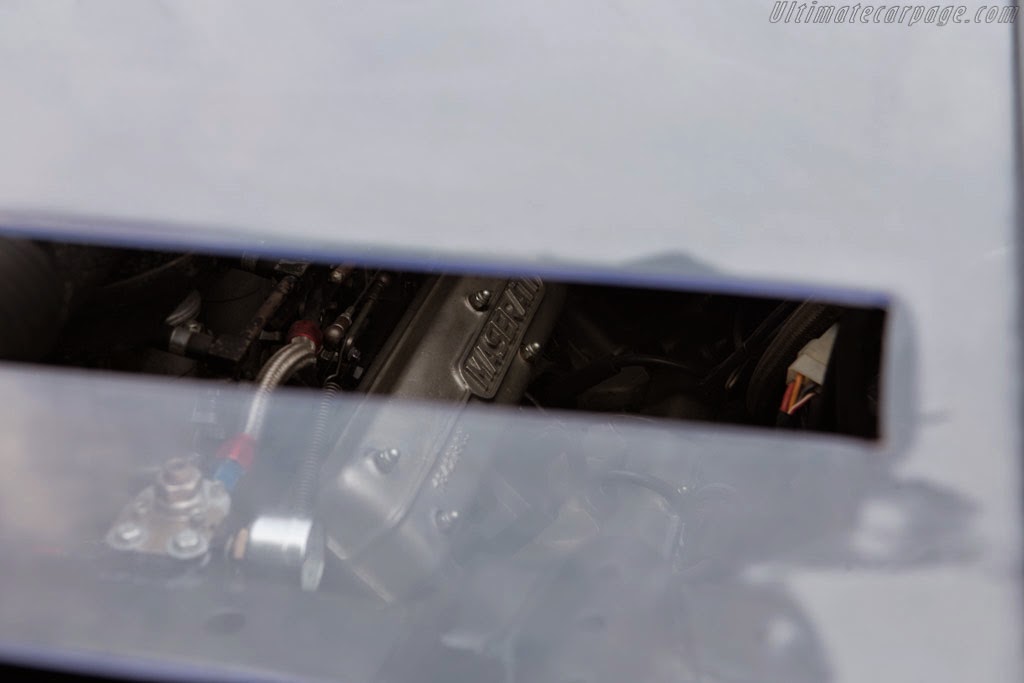One of the first projects started after Citroën acquired Maserati in 1968 was the development of a mid-engined sports car. The Maserati Bora (Tipo 117) was a mid-engined two-seat coupe powered by a V8 engine. Produced from 1971 to 1978, it had a top speed of 171 mph (275 km/h).
For the design, Maserati called in the help of Giorgietto Giugiaro under his ItalDesign banner. Giugiaro had previously worked for Maserati as head of design for Ghia with the Ghibli. Maserati asked Giugiaro to combine the mid-engined layout with the creature comforts and luggage space of a conventional Grand Tourer. The new Maserati Bora was finally launched at the 1971 Geneva Motor Show. The 'wedge' shape was dominated by a brushed stainless steel roof and a sizeable engine cover that included a substantial amount of glass. Pop-up headlights were fitted, which gave the Bora a very clean look.
Initially, the Bora was powered by a high-revving 4.7L V8 which produced around 310 hp. In 1975, a higher torque 4.9L V8 was added as an option. It produced 320 hp.
A number of innovative features such as a hydraulically powered pedal cluster that could be moved forward and backwards at the touch of a button, the driver's seat could be adjusted vertically, and a steering wheel that could be tilted and telescoped were introduced. The suspension was thoroughly modern with double wishbones and coil springs all-round.
Production ran from 1971 to 1978, with 524 Boras eventually built, 289 of which were 4.7s and the remaining 235, 4.9s. (wikipedia & ultimatecarpage.com)
Initially, the Bora was powered by a high-revving 4.7L V8 which produced around 310 hp. In 1975, a higher torque 4.9L V8 was added as an option. It produced 320 hp.
A number of innovative features such as a hydraulically powered pedal cluster that could be moved forward and backwards at the touch of a button, the driver's seat could be adjusted vertically, and a steering wheel that could be tilted and telescoped were introduced. The suspension was thoroughly modern with double wishbones and coil springs all-round.
Production ran from 1971 to 1978, with 524 Boras eventually built, 289 of which were 4.7s and the remaining 235, 4.9s. (wikipedia & ultimatecarpage.com)
1973 Maserati Bora Group 4
At the end of 1972, Maserati's French importer Thepenier requested a competition version to race in the Tour de France and at Le Mans. Two cars, fitted with a dry-sump, high compression version of the 4.9 litre V8, were prepared by the relatively small staff in Modena. Built to Group 4 regulations, the car was immediately competitive but its career was cut short due to homologation problems as well as financial issues. When properly sorted, the Bora could have formed a real threat for the Ferrari Daytonas and Porsche 911s. (ultimatecarpage.com)
(Photos from ultimatecarpage.com, bonhams.com, autowp.ru, flickr.com, europeanmotorstudio.com. autodrome.fr, petro-sexuals.blogspot.ca & artandrevs.com)


















.jpeg)








%2Bcopy.png)


%2Bcopy.png)
%2Bcopy.png)






























































.jpg)
.jpg)
.jpg)
.jpg)
.jpg)


.jpg)
.jpg)
.jpg)